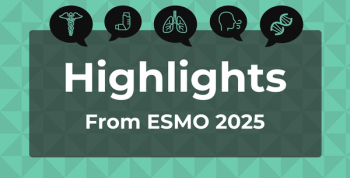
The Role of the Prostacyclin Pathway
Panelists discuss how sotatercept represents a paradigm shift as the first activin signaling inhibitor showing dramatic improvements in heavily pretreated patients, with the Stellar and Zenith trials demonstrating significant reductions in clinical worsening and potential for reverse remodeling.
Episodes in this series

Paradigm Shift in PAH Management: Sotatercept vs. Prostacyclin Pathway Therapies
The introduction of sotatercept is driving a significant paradigm shift in pulmonary arterial hypertension (PAH) treatment, particularly regarding the role of prostacyclin pathway activators. While prostacyclin analogs have been the cornerstone of PAH therapy for over 20 years, regional differences exist in their utilization—European practitioners rely heavily on parenteral prostacyclins with fully implantable pumps, while prostacyclin receptor agonists are less commonly used compared to the United States. The superior efficacy evidence for sotatercept is already influencing clinical practice, with some centers beginning to prioritize sotatercept before prostacyclin therapy and exploring strategies to wean patients off prostacyclins after sotatercept initiation.
However, prostacyclin therapy retains crucial advantages in specific clinical scenarios, particularly for patients with severe right heart failure and low cardiac output states. While sotatercept demonstrates impressive reductions in pulmonary pressures and resistance, it notably does not significantly improve cardiac output—a key limitation when treating patients in low-flow states with overt right heart failure. For these critically ill patients, the proven 20-year track record of parenteral prostacyclins like epoprostenol and treprostinil remains invaluable, with many clinicians advocating for prostacyclin initiation followed by sotatercept addition to optimize treatment outcomes.
The real-world challenges of prostacyclin therapy continue to impact patient quality of life and treatment adherence, including significant side effects such as headaches, nausea, diarrhea, flushing, and jaw pain. Parenteral formulations require central venous catheters or subcutaneous pumps with continuous infusion, creating infection risks and daily management burdens including cassette changes and site pain. Despite sotatercept's promise and the paradigm shift it represents, prostacyclins serve as a "safety net" for experienced clinicians who value their extensive clinical experience with these agents. The future likely involves individualized treatment approaches combining both therapies, with timing and sequencing decisions based on patient risk profiles, hemodynamic status, and personal preferences while awaiting long-term safety data for sotatercept.
Newsletter
Stay ahead of policy, cost, and value—subscribe to AJMC for expert insights at the intersection of clinical care and health economics.








































